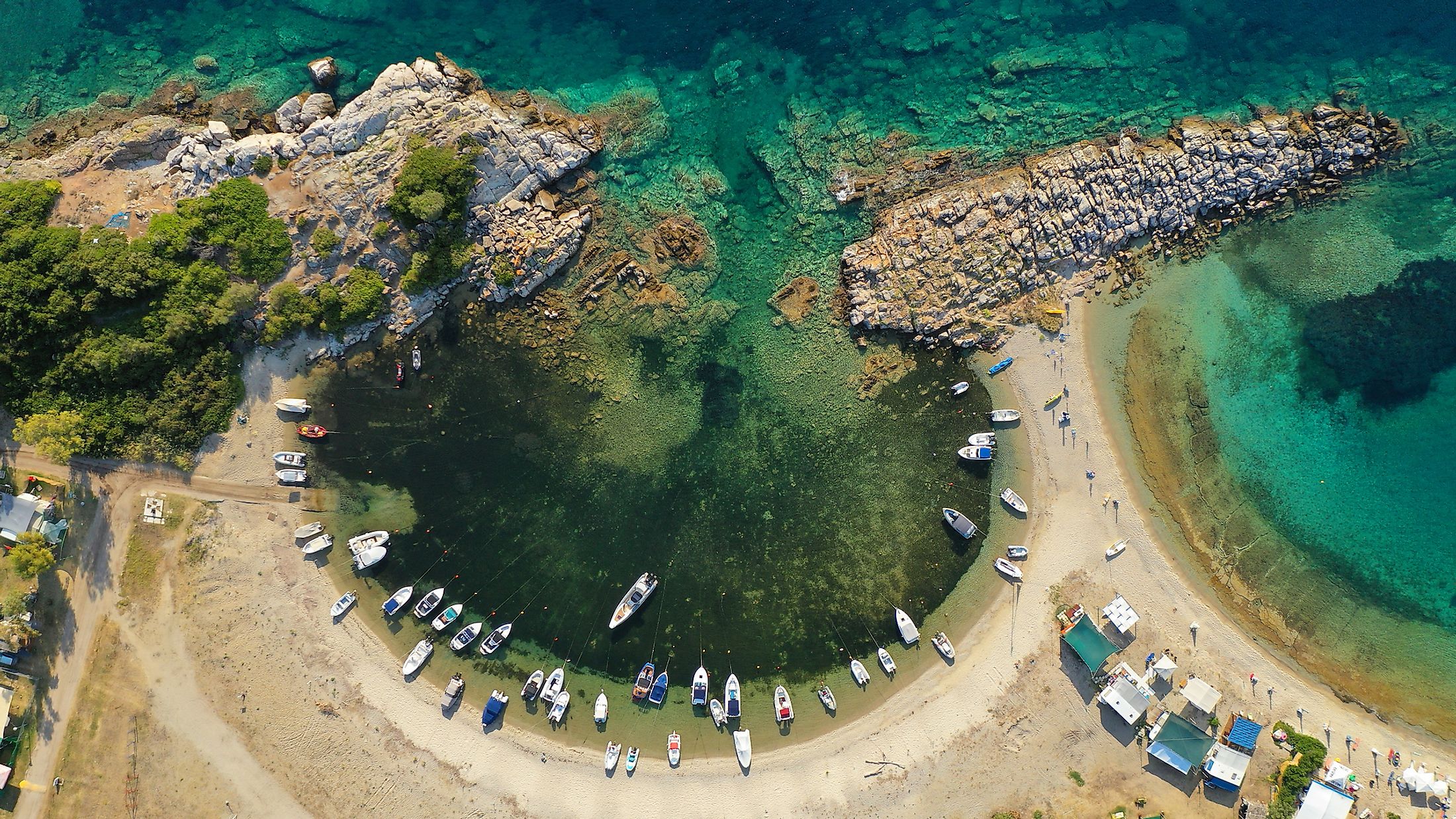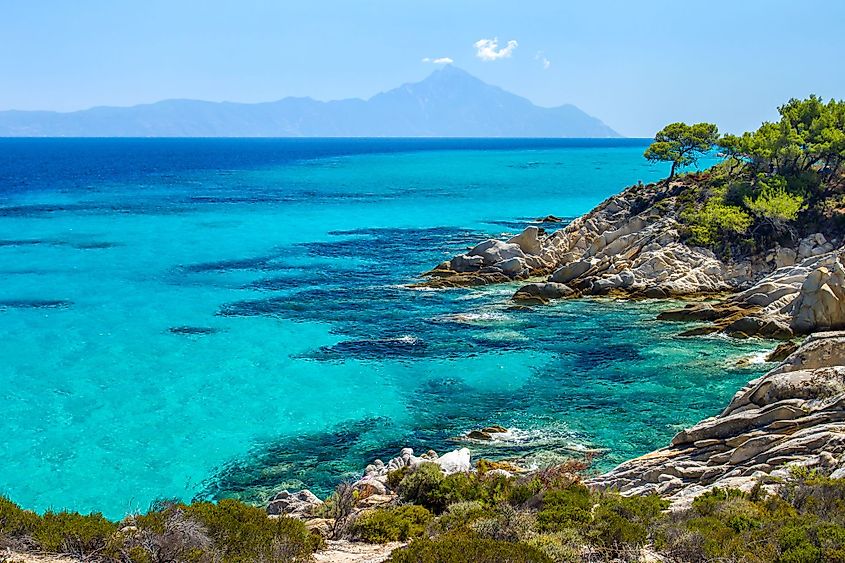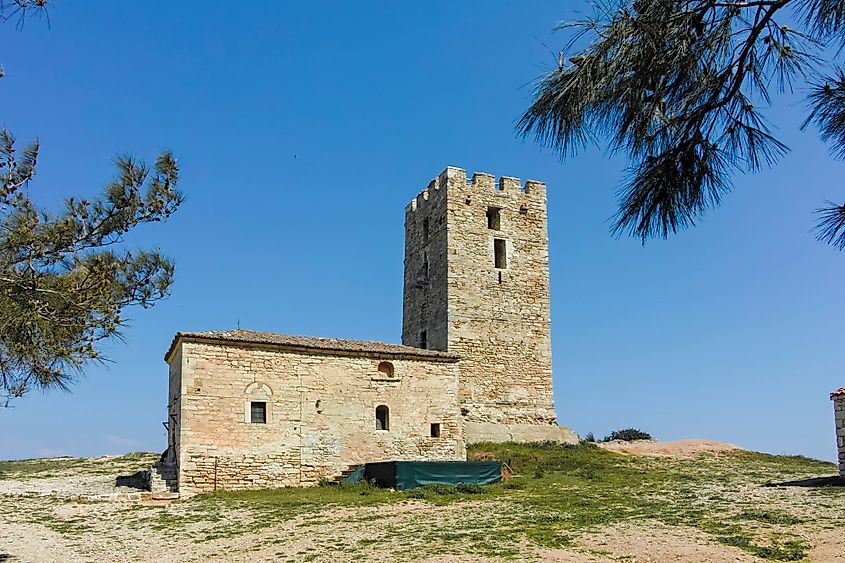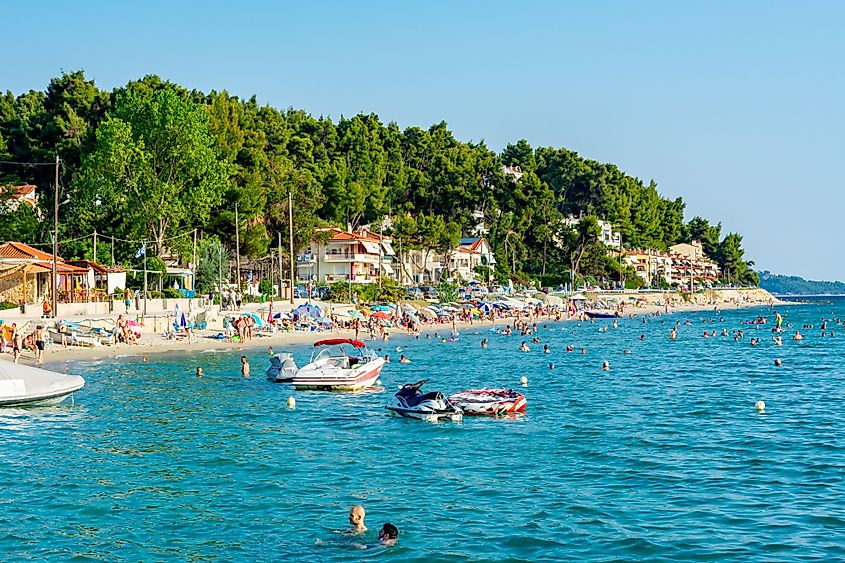
Kassandra Peninsula
Kassandra Peninsula is a peninsula that is situated in Chalkidiki, a regional unit of Greece. Kassandra is the westernmost among Chalkidiki’s three peninsulas. The Kassandra Peninsula also serves as a municipality whose seat is situated in the town of Kassandreia at the heart of the peninsula.
Geography

The Kassandra municipality was formed after the Greek Kallikratis Reform of 2011, which led to the merger of two former municipalities Kassandra and Pallini that eventually became municipal units. The Kassandra municipal unit is made up of the communities of Afytos, Kalandra, Kassandreia, Kryopigi, Fourka, Kallithea, Kassandrino, and Nea Fokaia. The Pallini municipal unit is made up of the communities of Chaniotis, Paliouri, Polychrono, Pefkochori, Nea Skioni, and Agia Paraskevi. The Kassandra municipality covers an area of 334.280 sq. km while the municipal unit covers an area of 206.097 sq. km. As of 2011, the Kassandra municipality supports a population of 19,231 people.
Brief History

In ancient times the Kassandra Peninsula was known as Pallene and was the westernmost of the three headlands of Chalcidice which extended into the Aegean Sea. As per legends, Pallene was once referred to as Phelgra and was the site of a legendary battle between the Greek gods and the earthborn Giants. During ancient times, Pallene was made up of numerous towns such as Neapolis, Mende, Therambos, Scione, Sane, Aphytis, and Aege. According to the Greek geographer Strabo, the five cities of Pallene in the 1st century BC included Aphytis, Scione, Sane, Mende, and Cassandreia. In 43BC, the Roman colony of Cassandreia was formed which included the entire Pallene peninsula. In the Late Antiquity period, the city of Cassandreia served as the center of the entire peninsula. However, in 539 or 540 AD, the city was destroyed by the Huns. Following the city’s destruction, a wall at the peninsula’s entrance was built by the Byzantine Emperor Justinian I. But it was not until the 10th century when the city had a sizeable population. During this time, the region prospered due to its fertility as well as due to the estates of the monks of Mount Athos’s growing monastic community and the Thessalonians.
The Great Catalan Company occupied the city and the peninsula during the winter of 1307 and 1308. In 1423, the city of Cassandreia was briefly occupied by the Venetians and in 1430 it came under the control of the Ottoman Empire. In 1821, Kassandra rebelled against the Ottomans and the entire peninsula was burnt down by the Turks. The refugees moved on fishing boats to the different Greek Islands and the peninsula remained completely abandoned for over 30 years. At the beginning of the 20th century, the peninsula began to be inhabited again and in 1912 it became a part of the Hellenic Republic (Greece).

In the mid-20th century, the Kassandra Peninsula was lined with paved roads. After the First World War and the Greek Civil War, tourists began to arrive in the region and tourism began to develop rapidly. The peninsula’s immense natural beauty, crystal clear waters, and pristine beaches attract several tourists and have made the Kassandra peninsula one of the most important tourist destinations in northern Greece. The Kassandra Peninsula was struck by a major forest fire on August 22, 2006, that greatly affected the central and southern parts of the peninsula.











